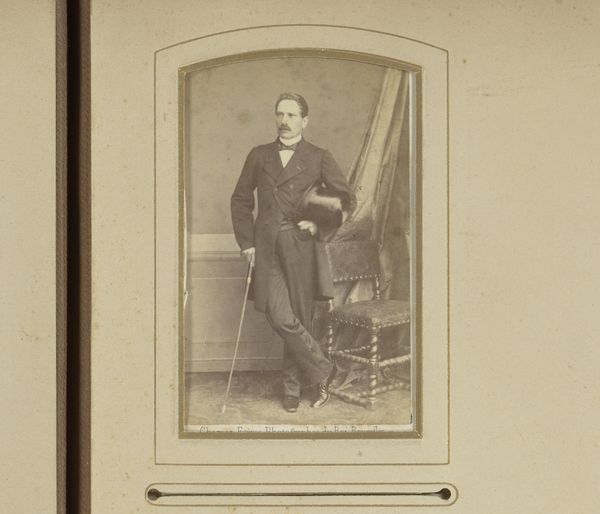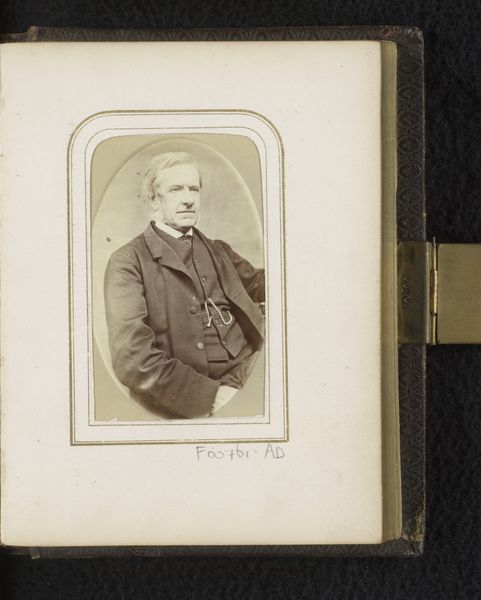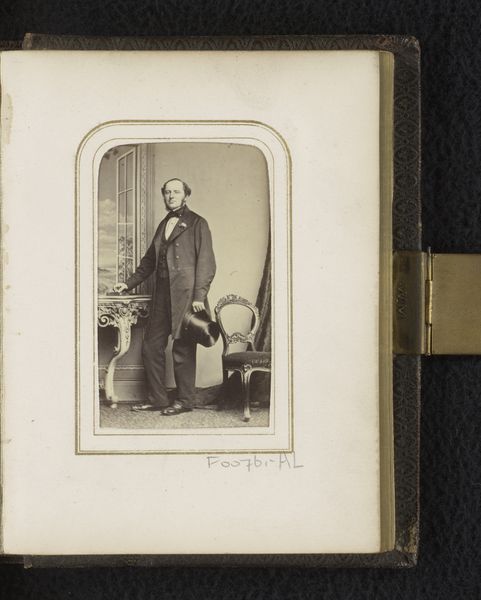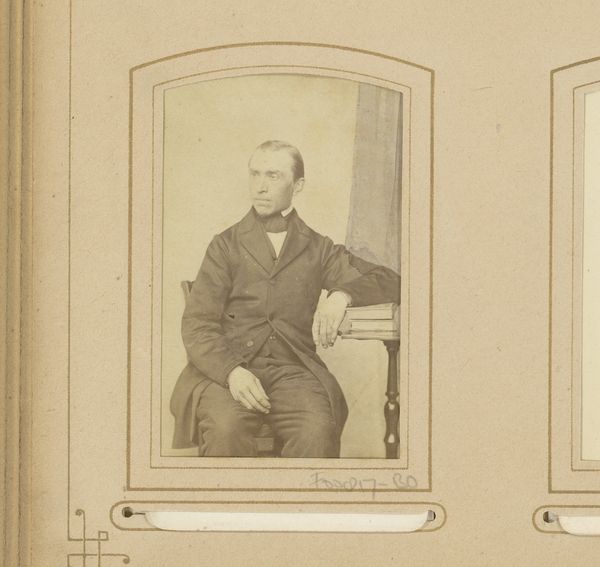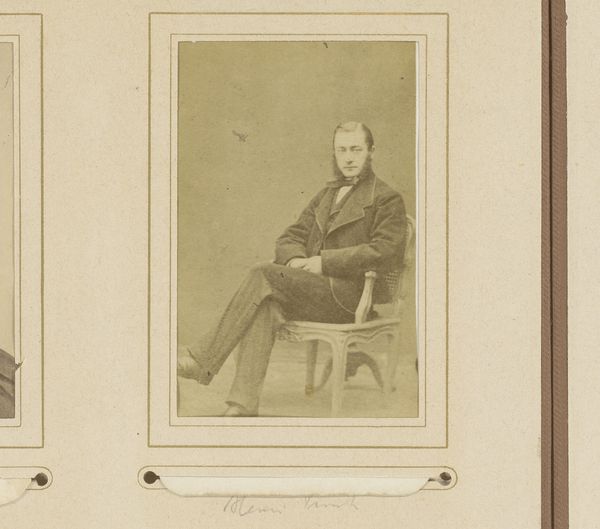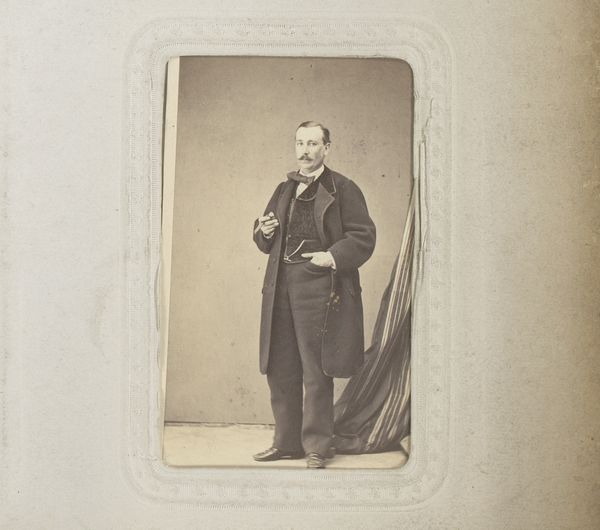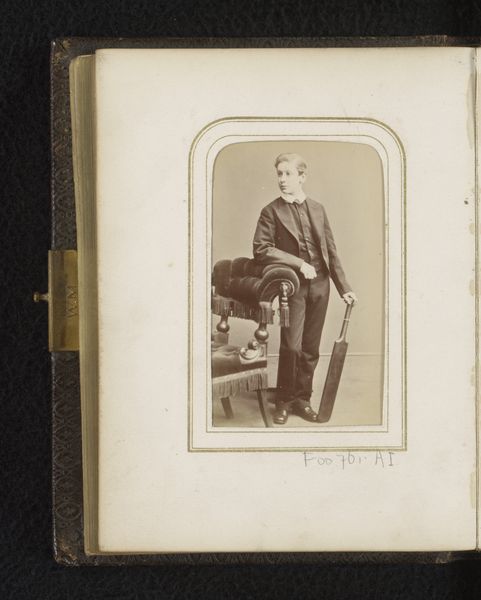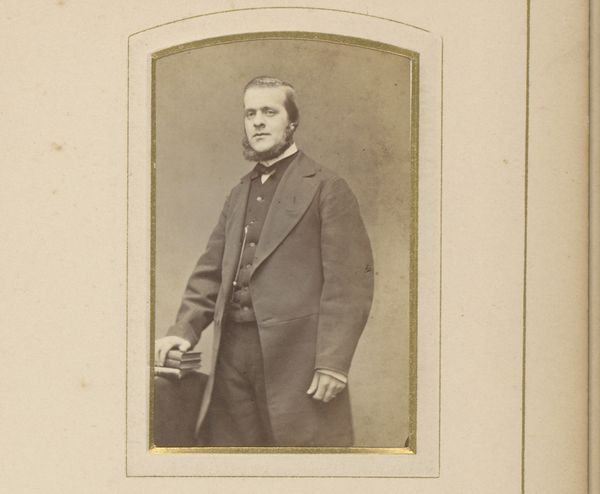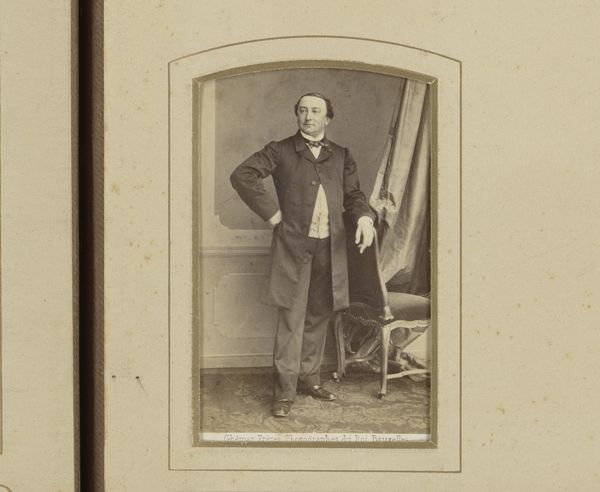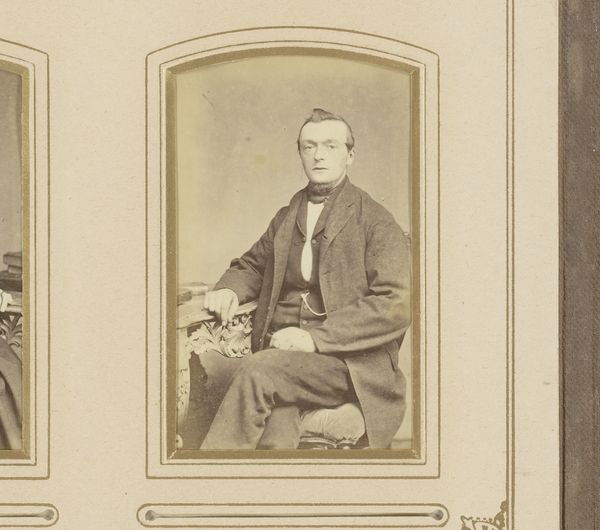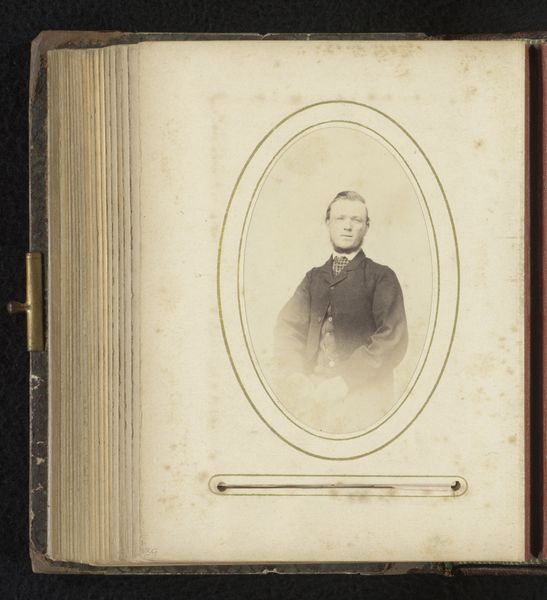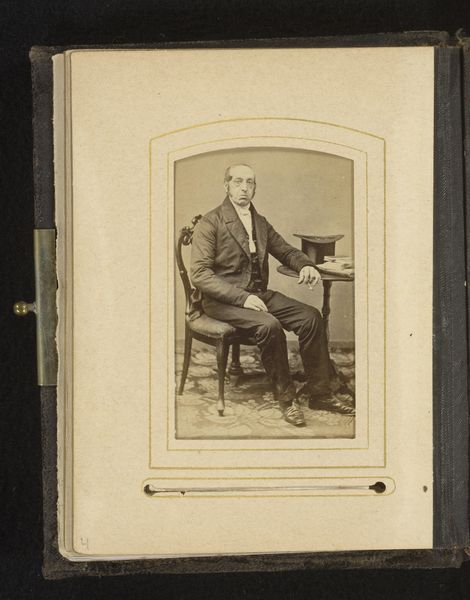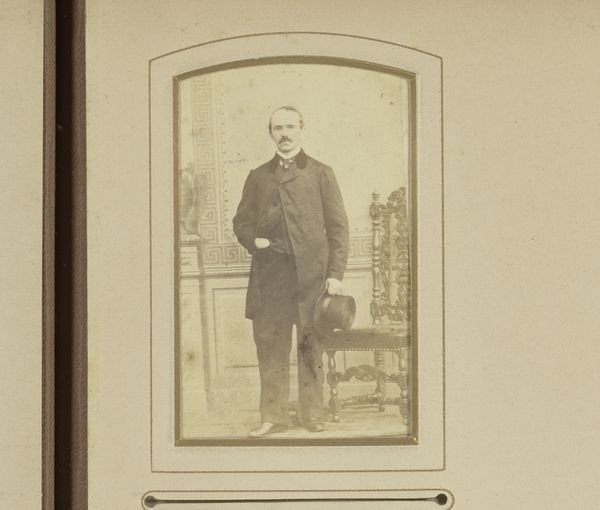
Dimensions: height 87 mm, width 51 mm
Copyright: Rijks Museum: Open Domain
Curator: Looking at this gelatin silver print, taken sometime between 1855 and 1870, we see a portrait of John Jackson, the Bishop of Lincoln, captured by H. Hering. The physical quality, that subtle sheen, really grabs my attention. Editor: The first thing that strikes me is how intensely serious he looks. The sharp focus and tonal range create a very somber, contemplative mood. It's more than just a likeness; it conveys authority and perhaps even a touch of melancholy. Curator: The medium here is important. The rise of photography provided a relatively accessible and reproducible way to document figures of power like Jackson. Gelatin silver prints allowed for finer detail and mass production compared to earlier photographic processes. It allowed his image to reach further than ever before. Editor: Yes, and what symbols does he consciously, or unconsciously, project? The clerical collar speaks volumes. It denotes his position within the Church, representing not just personal faith but also institutional power and spiritual guidance. Curator: Note how this print is housed in an album, its borders demarcated to contain and set off its significance. That points towards a conscious crafting of his legacy and memory through careful placement within family or personal narratives. Think of the labor in producing the album. Editor: I find myself drawn to the way the light catches the side of his face. It gives him an almost ghostly appearance and perhaps refers to a longer visual history where light is seen as an expression of divinity or enlightenment. Curator: Hering clearly capitalized on photographic techniques of the era. Consider the commercial incentives, the labor invested, to serve the self-fashioning ambitions of public figures. It becomes a site of power and capital investment. Editor: I agree. It's also about crafting an image intended to be both authoritative and intimate. His slight turn suggests both accessibility and perhaps even a touch of introspection, which must resonate with an audience looking for that kind of spiritual leadership. Curator: Absolutely, it pushes one to reconsider who photography benefits and the economic framework required for image-making at that time. It underscores that making a picture isn’t a neutral process. Editor: Seeing it through the lens of symbolism and the cultural history really illuminates the power this portrait still holds. It serves as more than just a reminder of a man; it symbolizes a network of religious, social, and individual concepts.
Comments
No comments
Be the first to comment and join the conversation on the ultimate creative platform.
